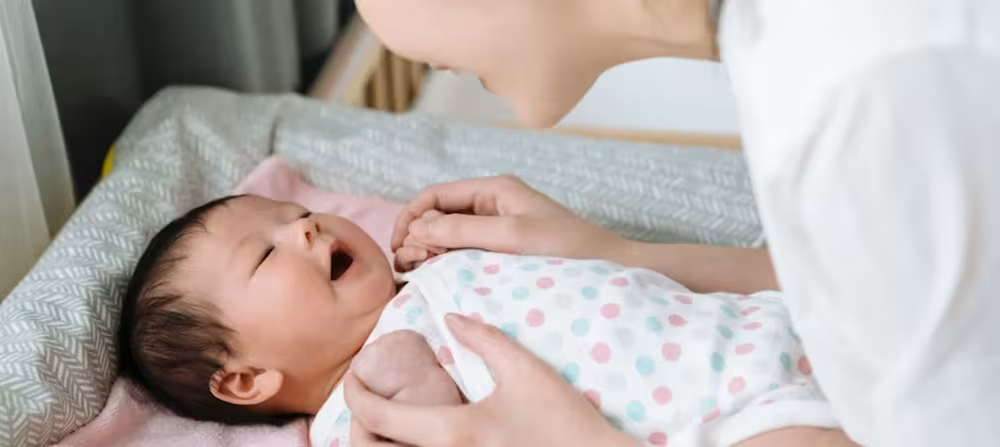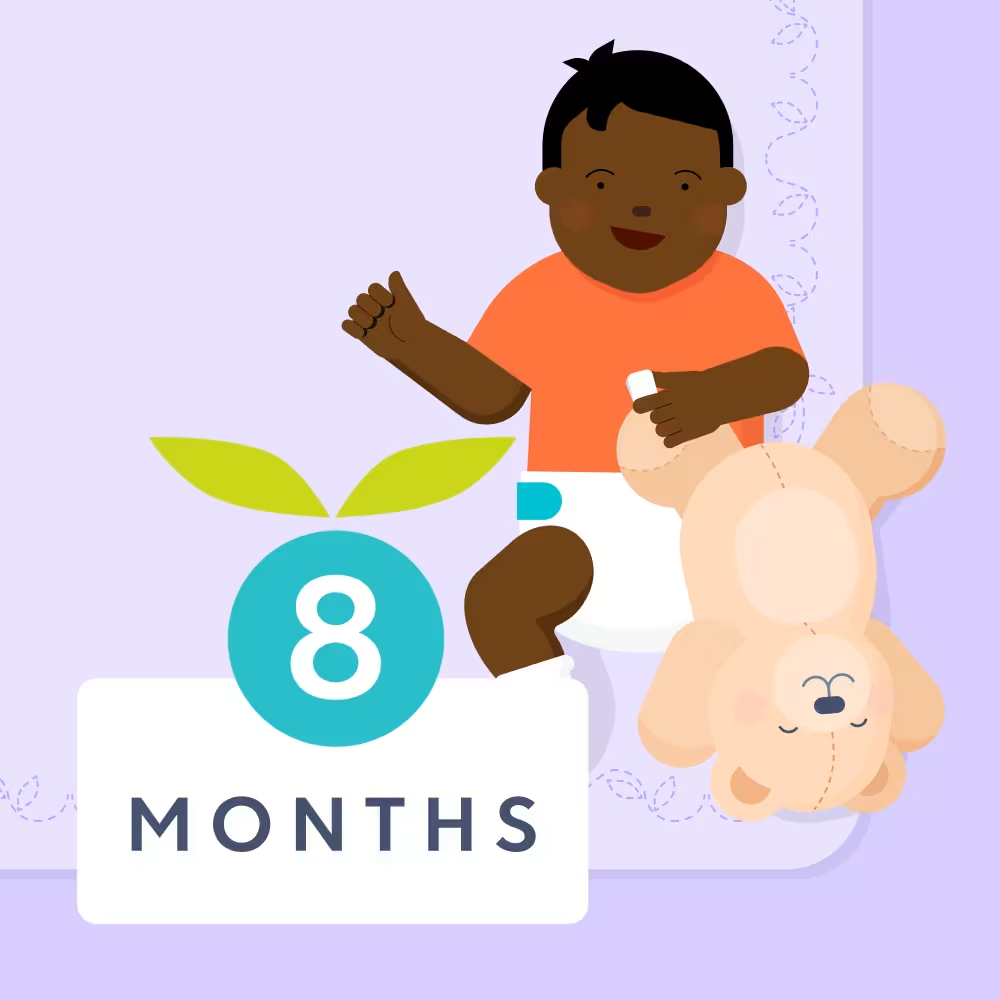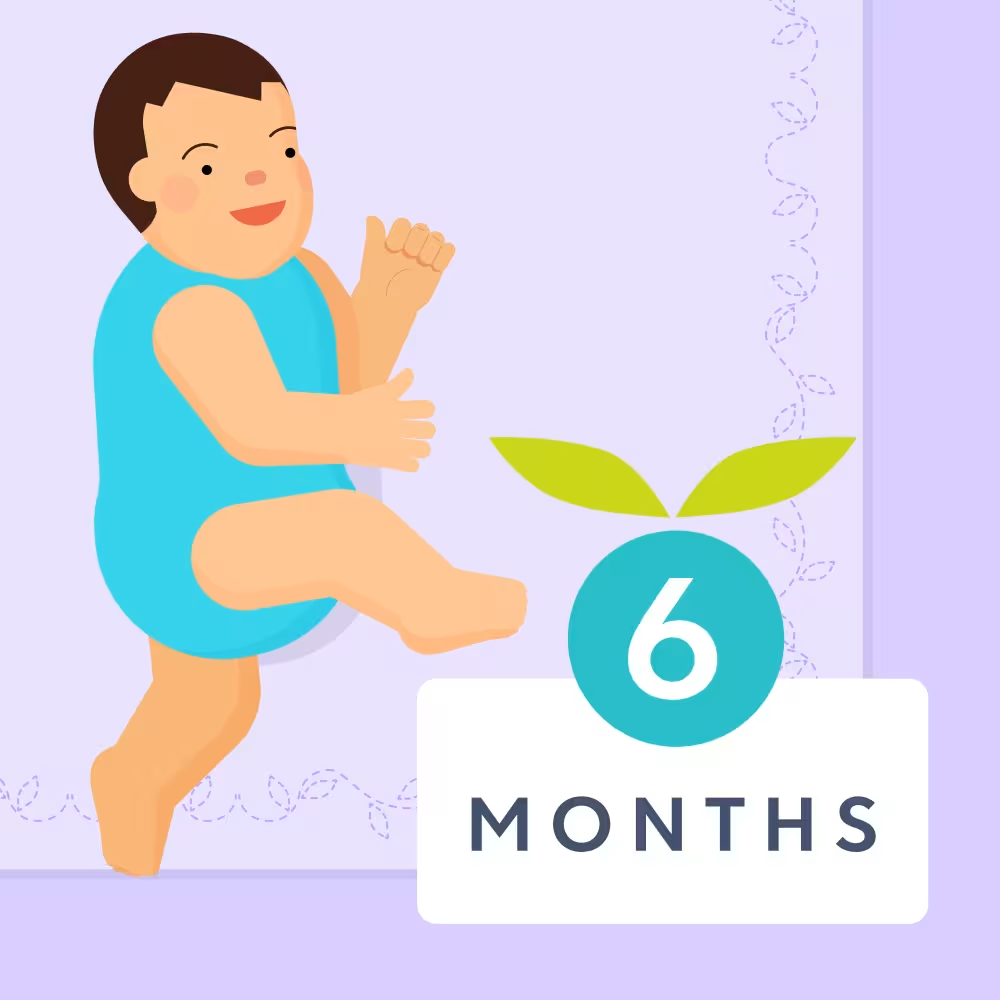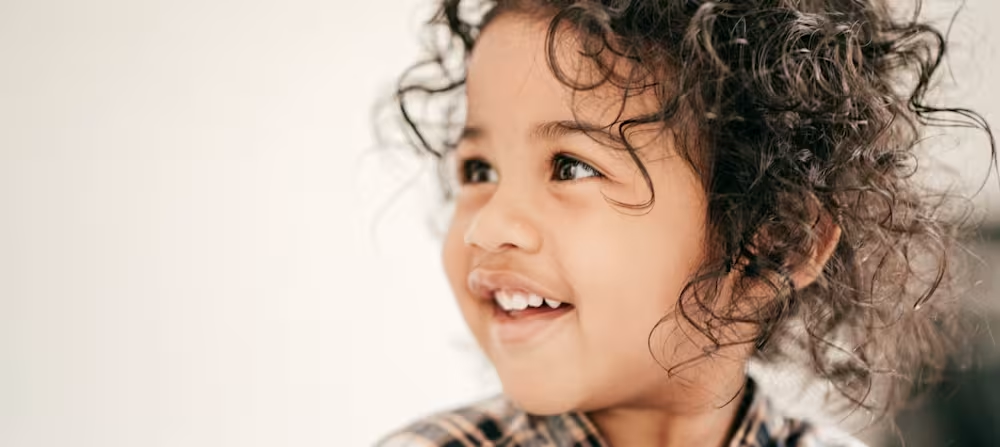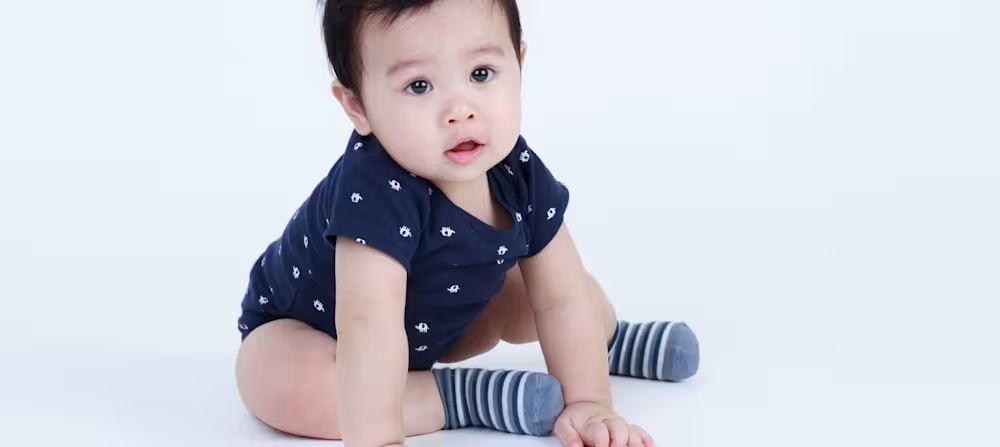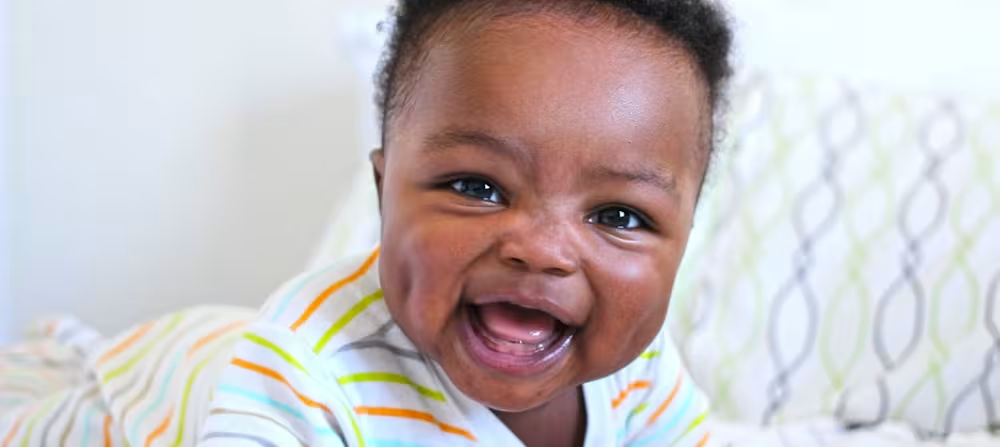When do babies coo for the first time?
Updated Dec 29, 2025

Baby coos are the cutest! If your little one is approaching the 2-month mark, you may get your first “ahh” or “oohs” soon. Babies tend to make these vowel sounds beginning at around 8 weeks. Once they start, you may find that your phone is filled with snippets of these sweet sounds. Who could blame you?
In this article, we’ll walk you through what cooing means, give you tips for encouraging these adorable noises, and let you know what milestones you might expect next from your child.
When do babies start cooing?
Parents often want to know when babies find their “voice.” Your baby may begin cooing and repeating some vowel sounds (like “ah-ah-ah” or “ooh-ooh-ooh”) at around two months []. Coos are often followed by different noises closer to three months [], like squeals, growls, and even blowing raspberries! Then, by closer to four months [], they will likely become routinely babble sounds like “bah-bah” or “muh-muh.”
Why do babies coo?
Communication development:
At first, newborns use crying as their main form of communication. You may even learn to differentiate between their cries (hunger vs tiredness etc.). After that, at around 2 months old, children typically begin to vocalize with different sounds, called cooing. Along with smiles, these sweet noises give babies the ability to “talk” to you and express contentment [] too.
The cooing stage is also when your baby begins to develop control of the muscles needed for talking []. First words are still a long way off, but the wheels are already in motion at this age!
Social development:
Mimicking your baby’s noises once they start cooing is a great bonding activity []. Your little one’s sweet sounds, especially when directed at you, are just the thing to make you feel all warm and fuzzy.
Ways to encourage baby cooing?
Tip #1: Talk, read, and sing
Your baby loves to hear your voice []! Even though they won’t understand the words you’re saying just yet, they’re comforted by your closeness and the sound of your voice. Try talking, reading, and singing to your little one as much as possible to encourage them to communicate back to you. This could look like reading a book before bedtime and also simply narrating the things you’re doing throughout the day — try not to overthink it!
Tip #2: Repeat their sounds
When your child coos, coo back to them and then wait for an answer! These early “conversations” let your little one know that their communication is important and effective. They can also encourage your infant to continue to develop [] these skills and teach them about the tone and pacing of talking to someone else.
Tip #3: Quiet time is OK too!
It’s great to interact with your infant as much as possible, but it’s also important to try to recognize when they may need a break. Young babies can easily become overstimulated — everything is so new to them! If your child turns away or becomes fussy or irritable, try letting them rest or simply snuggle for a bit instead.
Baby not cooing: What to do
There’s a wide range of normal when it comes to baby communication milestones. If your little one isn’t cooing yet at around 2 months, that’s OK! Some infants master skills early and some learn them later. However, you know your baby best — trust your intuition. If you have concerns about their development at this age, reach out to their doctor.
From 1 - 3 months old, infants will likely react to loud sounds, make noises other than crying, and smile when you talk to them or smile at them. If your child is not doing these things [] by around 4 months, consider letting their doctor know.
Cooing unlocked: What's the next step?
Cooing is usually followed by your little one starting to make more noises. Around 3 months [], they may make squeaks, growl, and begin to blow raspberries!
After that, between 4 - 6 months [], your child may begin to use consonant sounds in babbling (“dadada”) and make different kinds of sounds to express feelings. At this age, infants tend to use babbling to get your attention too. How cool is that? They may listen and respond when spoken to as well, and notice when they hear other sounds (from toys, etc.).
Takeaway
Babies tend to begin cooing around 2 months of age. After that, at around 3 months, little ones may make sounds that are more like squeaks and growls and can even learn to blow raspberries.
Cooing is an early form of baby communication that helps lay the foundation for future speech and language development. It’s also a new way for young babies to express their mood, whereas previously crying served as their main form of communication. Cooing is also an activity that can promote bonding with your baby. These early “conversations” are adorable!
To help your baby start cooing, be sure to interact with them as much as possible. This can look like talking, reading, and singing to them as well as being sure to respond to the noises they make to engage with them. Mimicking their coos and other noises lets them know their communication is important and effective. Just be sure to pay attention to your child’s cues — babies at 2 - 3 months can be easily overstimulated. If they’re showing signs of needing a break (like turning their head or getting fussy), give them a break for a bit.
Share article:
Note: The content on this site is for informational purposes only and should not replace medical advice from your doctor, pediatrician, or medical professional. If you have questions or concerns, you should contact a medical professional.
8 Sources
Share article:
